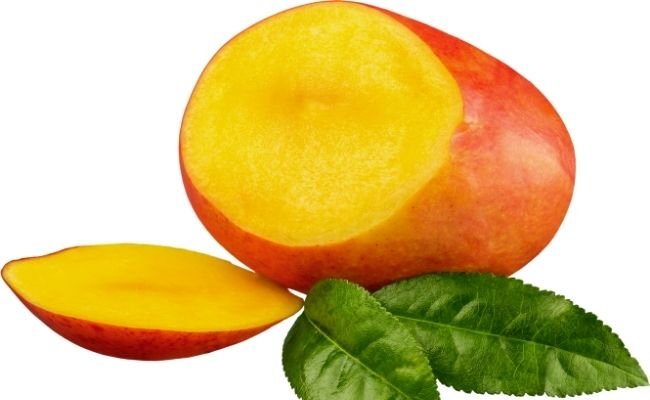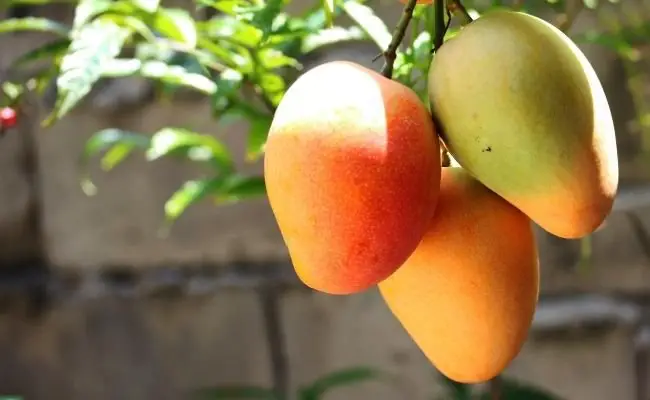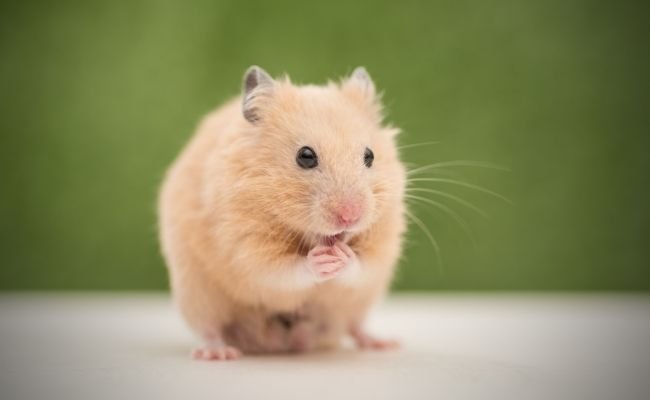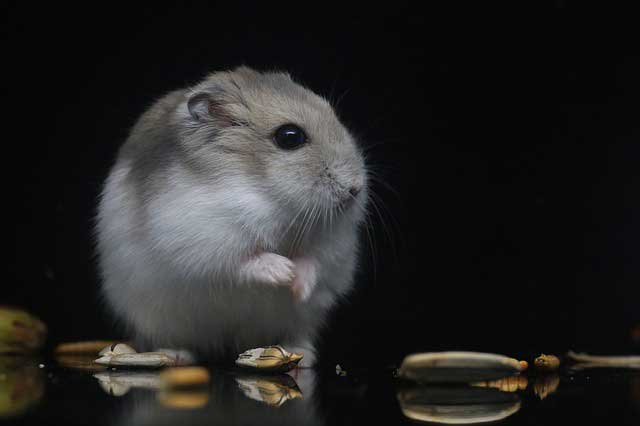Can Hamsters Eat Mango? Find Out If It’s Safe
Mango has for many years served as one of the most favorite fruits for mankind. After all, what else is expected from a mouthwatering tropical fruit packed with lots of healthy nutrients? And for sure, if you are a pet parent, the desire to share this sweetness with your little hamster friend comes naturally. But is mango healthy for hamsters?
All hamsters can eat mango in moderate amounts. However, not all hamsters should be given this fruit. Mango contains high sugar content which means it can increase the chances of your hamster getting diabetes or obesity. That’s why you should keep it from hamster species that are more prone to these conditions.
Therefore, before you give in to those big brown eyes and give your hamster a taste of the sweet mango, ensure that your pet belongs to the “safe” category.
And now, what hamster breeds can eat mango? Well, we will be addressing that in a moment. But first, let’s take a look at the most basic information about mangoes.
General Information About Mango
Mango, belonging to the genus Mangifera, is a delicious tropical fruit native to South India. The history of the fruit dates back to more than 4500 years ago where it was depicted in the carvings of the Hindu deities.
Mango is one of the most popular fruits in the world and it has different varieties based on where they are grown. West Indian variety is found in Mexico, Central America, and Caribbean while Alphonso mangoes originate from Maharashtra in India.
American and Indian mangoes are the most common types of mangoes, but they have different tastes. American mangoes taste a bit sweeter while Indian ones tend to be a bit tangy.
Mangoes are known to be delicious fruits that can add taste and flavor to any dish. They’ve been used as ingredients in beverages, sweets, ice creams, and other desserts for centuries.
And there you have it!
Nutritional Value of Mango

Ever wondered why mango is commonly referred to as the “king of fruits?” It’s because of the high amounts of nutrients it contains. Let’s examine the nutritional stats more precisely;
100 grams of fresh ripe mango contains;
- Water- 84.1g
- Carbohydrates- 11.6g
- Fiber- 1.5g
- Protein- 0.9g
- sugar- 14.1g
- Fat- 0.2g
- Calcium- 7mg
- Potassium- 197mg
- Vitamin A- 38mcg
- Vitamin C- 22.7mg
- Iron- 0.13mg
- Sodium- 2mg
As evident, this sweet treat is a powerhouse of health. This juicy fruit contains almost all the essential nutrients that you and your pet need to stay healthy and happy. And yes, that takes us to the next section.
Health Benefits of Feeding Your Hamster Mango
Mangoes are just as essential for your pet’s health as they are for humans. Among other benefits, mango can help your hamster in performing their bodily functions more efficiently and strengthen their bones and muscles.
This nutritious fruit has a high amount of Vitamin A (38 mcg) which that promotes eye health. In addition, this vitamin is important for your hamster’s skin, fur, bones, and reproductive system. Ever wondered where the orange color of a ripe mango comes from? Well, it’s from the Vitamin A it contains.
Again, mango fights diseases such as cancer, heart disease, arthritis, and many others by strengthening the immune system. That’s because it contains high amounts of Vitamin C and Vitamin E.
Plus, this tropical fruit contains high levels of antioxidants which are essential for neutralizing free radicals in the body, and that keeps the body from aging and prevents cancers.
Mangoes are also effective at soothing inflammation, easing pain, reducing fever, curing colds, and treating diarrhea. Leave alone your pet, if you face any of these symptoms, you should consider feeding on this helpful fruit right away.
And finally, mango is just as effective for your pet’s bones and muscles. Yes! Vitamin A (again!), calcium (7mg), magnesium (0.13mg), and potassium (197 mg) all work together to keep your hamster healthy by supporting their bone structure and maintaining their muscles mass.
Now you know why mango is not only a healthy snack but also generally good for your hamster’s digestive system and overall health.
And now to our long-pending question; what hamster breeds can eat mango?
Let’s find out;
What Hamster Breeds Can Eat Mango?
The breeds that can eat mango are simply the ones more unlikely to develop diabetes and obesity. These breeds include;
- Syrian hamsters
- Roborovski hamsters
- Winter White Dwarf hamsters (some)
What Hamster Breeds Can’t Eat Mango?

The hamster breeds that shouldn’t share with you this tasty fruit include;
- Chinese Dwarf hamsters (some)
- Campbell’s Dwarf hamsters
- Winter White Dwarf hamsters (most)
So what’s the point?
Well, the point is that mangoes are good for your pet but not all species of hamsters can eat them. And since Winter White Dwarf hamsters appear on both the lists of “safe” and “unsafe,” it is advisable to always consult a vet before feeding them anything new.
Again, note that we said mangoes should only be eaten by hamster breeds which are “more unlikely” to get diabetes and obesity. That should tell you that no hamster is 100% safe from obesity or diabetes. So, always monitor your pet’s eating habits and overall health while including new fruits in its diet.
And if your hamster is already diabetic or overweight, whether belonging to the “safe” or “unsafe” breed; don’t feed them mangoes.
And now to the amount you should feed;
What Size Of Mango Should Syrian Hamsters Eat?
Although tey are the largest breed of hamsters, you should give your Syrian hamster only a tiny piece of mango. The general rule of the thumb is that the size of mango shouldn’t exceed the size of their paws. It’s very likely that your pet will demand more, but here is where you have to be strict.
Again, ensure that you don’t feed mango every day. The high sugar content can be harmful for their health when taken more frequently. Hence, only ensure that you feed your Syrian hamster mango once a week. If it has to be more, don’t exceed twice a week and not on consecutive days.
What Size Of Mango Should Roborovski Hamsters Eat?
Roborovski hamsters should only be fed a small slice of the fresh fruit as well. Here, ensure that you stick to teaspoon-sized pieces when giving mango to your pet. Anything more than that can cause more harm than good.
About frequency, stick to at most once a week, period!
What Size Of Mango Should Winter White Hamsters Eat?
Though some Winter White Dwarf hamsters are good to eat the mango fruit, most of them are not. Unfortunately, you can’t tell whether your hamster belongs to the safe line that can eat this delicious fruit. For that reason, we recommend that you avoid giving it to them.
What if you have to?
If it’s a must for your Winter White Dwarf hamster to eat mango, we recommend that you consult your vet. The vet will recommend the amount they should eat and the frequency based on the specific health concerns of your hamster.
So, when in doubt always consult a professional.
What other treats can Hamsters eat?
So you just learned that your hamster breed is among those that can’t eat mango. Quite unfortunate! But here’s the good news; there are several other healthy treats you can try out when looking for one.
We recommend that you give your pet green beans, blueberries, strawberries, grapes, sweet potatoes, bananas, unsalted peanuts (not roasted), or carrots. You can also try apples (without seed), pears, and watermelon.
Other alternatives include turkey meat, chicken, some popcorn, and fresh vegetables such as broccoli, cucumber, celery, cabbage, spinach… so on and so forth.
All these goodies are very healthy for your hamster. However, no matter the treat, always remember to give in the correct amounts.
All in all, our rule of thumb is to stick with foods that are high in fiber but also low in sugar and fats. Again, all treats should be occasional and not a frequent choice. Actually, they need to come as a supplement to the normal hamster food and not as their daily diet.
Health Risks of Mango

While it’s without a doubt that mango is one of the most delicious exotic fruits on the planet, it still comes with its own fair of inherent risks. Here are some of the health risks of mangoes;
- Obesity: Right from the beginning of this article, we have been telling you that mangoes are bad for obese or overweight hamsters. The reason being, mangoes are high in sugar and fats.
- Diabetes: Again, since they have high sugar content, mangoes can worsen your hamster’s diabetic symptoms. They can even cause diabetes, especially when given to the more prone breeds of hamsters.
- Pancreatic problems: This is definitely a problem if your pet has an existing pancreatic disease, especially one that affects its digestive enzymes. A natural enzyme in the mango fruit known as chymotrypsin can decrease these enzymes and hence worsen the symptoms of pancreatitis in your pet.
- Liver problem: Similar to the above, liver disease can be worsened by mangoes due to a specific compound in them. The compound is known as furanocoumarin and it’s known for interfering with liver detoxification enzymes that are the key to effective digestion.
- Indigestion: Though not as common among hamsters, indigestion can happen due to the acidic content of this sweet fruit. The high acid concentration in mangoes can lead to digestive issues such as stomach upsets.
As we can all see, your hamster will only fall to most of these risks if you feed them plenty of mangoes on a regular basis, not just once in a while.
Is Dried Mango Safe For Hamsters?
Yes, hamsters can have dried mango, and is safe for them. However, ensure that it doesn’t contain any added sugar or preservatives. We all know what these compounds can cause in the long run.
Can Hamsters Eat Mango Seeds?
No, you need to remove the mango seed before feeding your hamster. Mango seed is way too large and tough for your hamster to eat. Therefore, only give your hamster the fleshy part of this delicious fruit.
Can Hamsters Eat Mango Skin?
Just as with seeds, avoid giving your pet mango peels. Sure, it likely isn’t going to make your hamster sick. But again, it doesn’t contain anything unusual that you won’t find in the fleshy part of the mango. Actually, it can even have pesticides and other toxic chemicals. Therefore, always ensure that you remove the peel.
Can Baby Hamsters Eat Mango?
Always avoid giving baby hamsters mango. They have small tummies and don’t want to have anything take the room for their regular food. Therefore, if you have a baby hamster, just be patient until they are old enough to eat solid food. Then you can start introducing them to mangoes and all the other treats.
Is Mango Juice Safe for Hamsters?
A few drops of mango juice will be fine for the “safe” breeds. However, the recommended amount is too tiny that you will almost always miss the proper serving size. For that reason, we recommend that you avoid giving your hamster mango juice.
Final Verdict:
And there you have it- mango is just as safe for some hamsters as it is dangerous for others. Just remember to always monitor the intake of all treats you give your hamster. Don’t overfeed them, keep an eye on their weight, and ensure that they have access to adequate regular food at all times. If you think that they are getting too much then just scale back a little bit more.







